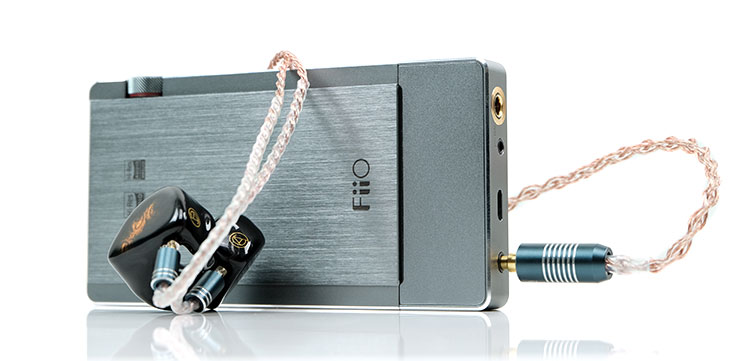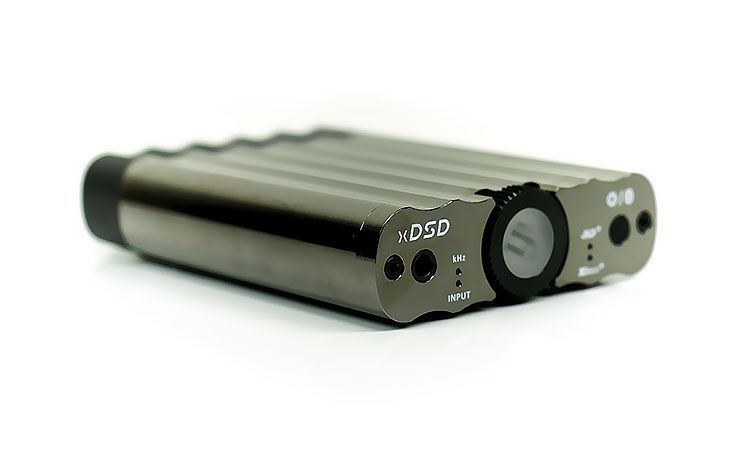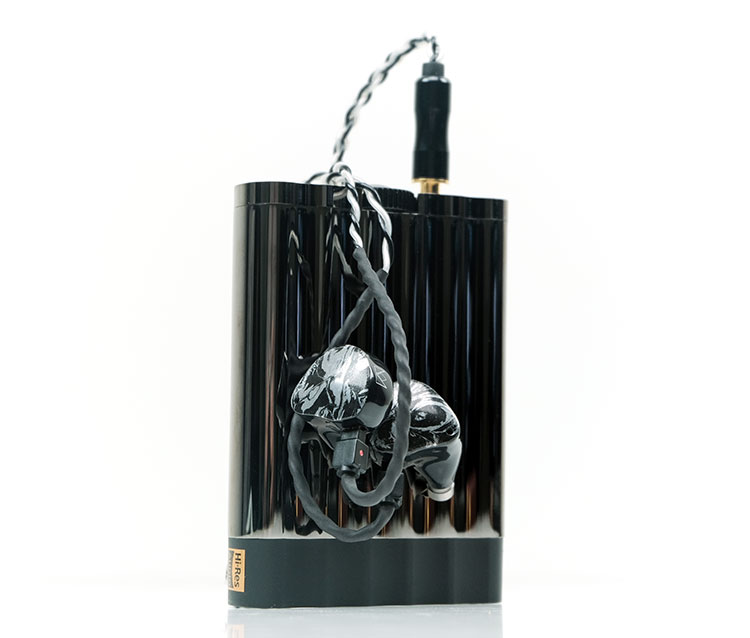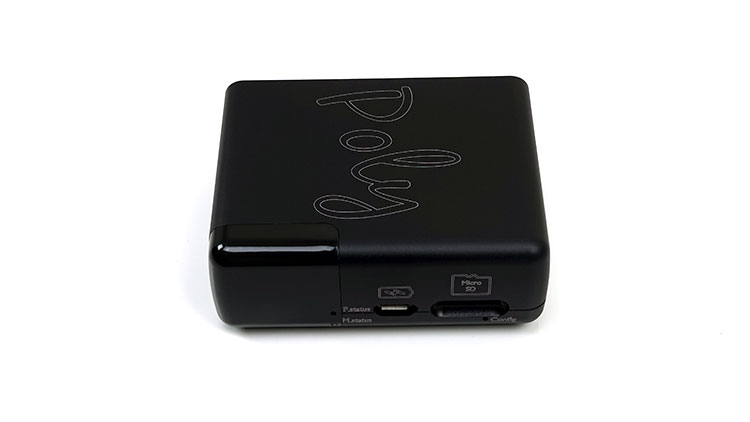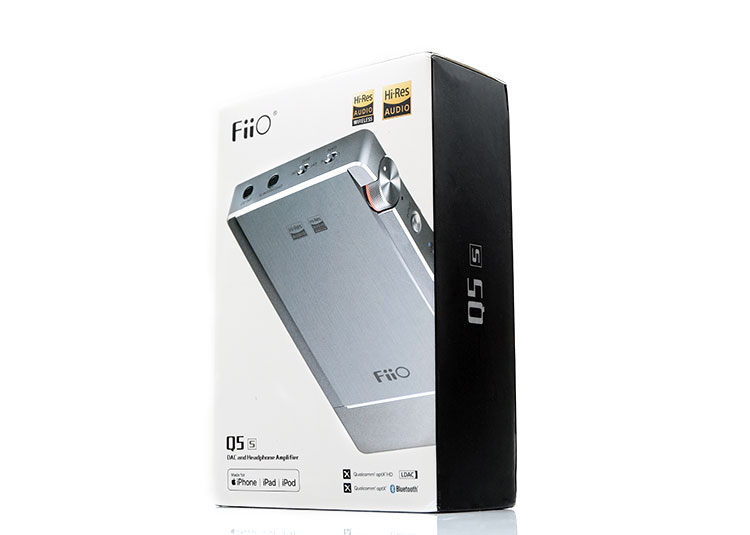Sound Impressions
Presentation
The Q5s is a smoother and more refined listening experience compared to the Q5. The Q5 I rated as reasonably clean and clear with a ‘natural to neutral’ presentation. The Q5s is a little warmer, and fuller sounding but also more linear from top to bottom.
When comparing both you will find the Q5s treble in particular on most IEMs to sound a little richer and wetter which in turn smooths out vocal and instrumental notes. On the Q5 treble and upper mids sound a little harder for me, a little shaper and hollower.
The energy is there but it is not quite as liquid as the Q5s. This can make a difference, especially with breathy singers such as Anggun who deliver a much more mature and engaging sound on the new DAC setup inside the Q5s. The Q5 tends to leave a bit more sibilance in there with less sustain and texture and it sounds a little uneven in its harmonic balance.
The low-end on the Q5 has a bit more punch and impact compared to the Q5s. I am not surprised by that. The older AK4490EQ always did well in that regard and the new AKM chips such as the AK4493EQ, whilst still retaining a full-bodied sound have a softer “hit” and a bit more neutral in quantity by comparison.
The flipside is the slightly more coherent bass-to-mids transition on the Q5s whereas the Q5 sounded a little more weighted to the sub-bass quantity and vocal focus. Lower-mids sound a little more sucked out on the Q5 compared to the more coherent and richer timbre of the Q5s lower-mids.
Example
A good example of this contrast in performance is Anggun’s “Impossible” track from her 2011 Echoes album. There is a bass guitar low note strike behind the lead vocal at around the 23-second marker that sounds far weightier on the Q5 compared to the Q5s.
However, the Q5s vocal pitch and timbre for me sound smoother, richer, and more natural. The Q5s higher pitching timbre leaves Anggun’s vocals sounding sharper and more prone to sibilance.
They also have less body which is something I like to hear on breathy vocals. The Q5 sounds detached and “bombastic” in part, the Q5s sound more balanced despite the slightly softer low-end punch.
Synergy
Wired
Despite the increase in power on both balanced and unbalanced, the Q5s does remarkably well for noise on the single-ended though it is not a pitch-black background.
It does behave better with sensitive IEMs compared to the likes of the xDSD and xCAN but you can still detect a hint of hiss with the likes of the CA Solaris. The balanced output is noisier with Campfire Audio’s finest and you will hear a fair amount of hiss but again, not quite as much as the original Q5.
However, generally sensitive IEMs such as the EE Phantom perform a lot better, and except for just the slightest noise on the balanced output, I would generally class the Q5s as fairly suited to sensitive gear in wired mode.
Wireless
Bluetooth is a different matter when it comes to noise levels and, whilst it is much better than the xDSD and xCAN for sensitive IEMs, it is still a bit hissy with ultra-sensitive IEMs. I also found the first few seconds after pairing to be very high for EMI before it got quieter.
Granted LDAC and HWA are a class higher on the xDSD’s softer, darker-sounding BT aptX signal but it is not a pitch-black background. Compared to the Q5 I felt the general hiss level was a shade higher on the Q5s balanced and unbalanced.
Hybrid designs such as FiiO’s own FH5 and FH7 as well as high-end models such as the 105dB SPL tia Trio from 64 Audio were much quieter and that is where I would be attracted to the Q5s as a portable BT amp. The hiss from these designs was negligible.
One thing I noted was placing your hand over the back of the Q5s rear plastic panel, the soft bit under the leather cover. That’s where the BT chipset is located. Covering that area seems to kill some of the EMI and noise when in BT mode.
Bluetooth Stability
Tested with a Samsung Note 9 and Huawei P20 I found the range and stability in our house to be even-steven and marginally better than the old Q5 using the same sources.
I took my usual route to the backroom balcony which is behind 2 walls and about 5-8m away from the source. The Q5 aptX BT4.2 signal tapped out about 1m before the LDAC BT5 signal on the Q5s.
The FiiO Player’s BT GUI in Android for the Q5s (and the Q5) is excellent and yes, you can EQ over BT using the FiiO Player as your source media manager which is going to spark some joy.
I also like some of the small BT controls the software offers like the ability to determine the codec, standby time, and the ability to turn off the LED light bar at the base of the Q5 main body.
Power
The output power of the Q5s has improved slightly from the Q5. We are now going from 160mW on a 32Ω unbalanced and up to 440mW balanced on the same load on the Q5 to 210mW and 560mW on the same Q5s settings. Using a test headphone, the Hifiman HE1000 V2,
I found the loudness levels of both the old Q5 and the new Q5s to be roughly the same going balanced and neither had an issue with clipping on the HE1000 V2. However, the timbre on the Q5s sounded fuller, perhaps slightly better dynamic range. The Q5 sounded a lot harder and hollow in comparison.
Select Comparisons
iFi Audio xDSD
$399
Technical
The xDSD was, (and still is) the closest competitor to the original Q5. This is also a portable DAC/Amp with Bluetooth and has a few different features not to mention very different looks. However, with the Q5s I believe FiiO’s creation pulls ahead in a few key areas.
Now for me, the xDSD Burr-Brown PCM1793 Multibit hybrid DAC architecture is still a top-quality DAC but with the move to the AK4493EQ in a dual implementation, the Q5s closed the gap. The rest is just down to tonal preferences.
On a decoding level, the xDSD is just as good, if not better than the Q5s at PCM768kHz & DSD512 (24.6/22.6MHz). The Q5s is still at DSD256 though it matches the xDSD’s PCM coding ceiling.
The xDSD will also render MQA files using MQA 88.2/96/176.4/192kHz filters which the Q5s does not so it does still have some advantages.
For Bluetooth, there is now a substantial gap with the Q5s on BT5 and capable of LDAC and HWA receiving compared to the xDSD’s BT4.0 with a max of aptX. It uses a lower-level Qualcomm CSR8645 compared to the Q5’s CSR8675.
Performance
On an amping level, the xDSD is also quite similar in terms of raw output power at 500 mW into a 16Ω load compared to 535W on a similar load with the Q5s.
However, the technical data favors the Q5 with a lower noise floor at THD=N 0.002% compared to the xDSD at 0.005%. The SNR of the Q5s is also better at 117dB unbalanced compared to 113dB on the xDSD.
And that translates to noise and slightly less on the amping output of the Q5s. With sensitive IEMs such as the Solaris, I was hearing more hiss on the xDSD, and the same also for the BT connection.
The Q5s is by no means quiet on BT with something like the Solaris but more acceptable than the xDSD. Also, aptX on the xDSD sounds softer, has fewer details, and does not have as much separation as the Q5s LDAC performance.
That being said once you move up to the likes of the VE Elysium at 105dB SPL or any monitor below 110dB then xDSD starts to sound a little quieter but it is not a pitch-black background on the xDSD.
The Q5s, however, was very quiet indeed with the Elysium. The background is also much blacker on the Q5s on sub-110dB SPL-rated monitors.
Tuning
I decided to use the 64 Audio tia Trio for this test to leave the noise and hiss behind and hear a fairly black background which it does for both. That allowed me to focus better on the different traits of these two portables.
The xDSD is the slightly bassier and warmer-sounding DAC/Amp, even with the onboard DSP turned off. The Q5s is a slightly cleaner and more neutral presentation.
Not to say there isn’t a body on the low-end from the Q5s, there is, just that it is a bit more linear. The xDSD is more colored, ‘thumps’ a little harder paired with the Trio, and sounds the more forward of the two.
Mids and highs sound a little cleaner also on the Q5s whereas the xDSD is smoother, wetter, and possibly has a touch of roll-off on the very top-end but nothing very noticeable. Timbre is the richer of the two whereas the Q5s is a little more accurate for me. Vocals are also more neutral and lighter in tone on the Q5s.
DSP
The onboard DSP is much better on the xDSD. I am not a fan of the Q5s bass boost, to be honest, it sounds muddy and ill-defined whereas the xDSD is tighter sounding and not as in your face. Throw on 3D+ and the xDSD edges ahead for me.
I think the Q5s is the more accurate sounding of the two in stock form with a bit more treble sparkle. The xDSD will please those who want something a bit more euphonic and musical. The xDSD DSP options are also a bit better implemented and more useful.
iFi Audio xCAN
$299
Technical
The xCAN does not offer pure DAC functionality, it is marketed as a portable amplifier but it does have a BT receiver with a Sabre DAC for decoding function that gives it a bit of crossover with the Q5s. Therefore, you will not get any USB-DAC or OTG but you can transmit a BT signal to it and the Sabre DAC will decode it.
The xCAN uses BT4.2 so it is a step down on the Q5s BT5 capability. That also means the xCAN is capable of aptX max whereas the Q5s have the latest LDAC and HWA capability with a much less compressed sounding audio performance.
Build wise it’s very similar to the xDSD with that polished hip-flask look and dainty compared to the bigger and more traditional shape of the Q5s.
It has a bit more hardware DSP than the Q5s with the 3D+ and XBass II systems and they do work very well indeed. The FiiO Bass boost is a lot simpler for me and not my cup of tea compared to the iFi Audio DSP options.
The xCAN is USB-C whereas the Q5s is micro-USB and can take a balanced and unbalanced line-in compared to just a line-out for the Q5s. In truth, you can hook both of these up together to create a system with the Q5s as your DAC and the xCAN as your amp.
Performance
The amp on the xCAN is much more powerful at 1mW into 32Ω balanced and 600mW into the same load S-Balanced (unbalanced). Compare this to the Q5s at 210mW and 560mW into the same load max balanced and you start to get the picture. The xCAN is twice as powerful.
The levels of noise on the xCAN when comparing BT and wired connections is a lot higher than the Q5s with sensitive IEMs. The Q5s does not have the same level of hiss as the likes of the CA Solaris and EE Phantom and are pretty quiet with the VE Elysium and 64 Audio tia Trio which have a sub-110dB SPL.
That is not to say the Q5s is quiet with the Solaris but rather the xCAN BT hiss is at a distracting level, especially when going balanced 2.5mm TRRS.
Tuning
The tuning differences focus more on the punch and musicality between the two. I find the Q5s to be fairly smooth and full-bodied on the low end.
The xCAN, on the other hand, has a little upturn in the treble that adds a bit more contrast and bite and pulls in a bit more focus on the upper mids onwards. That tends to balance out a fairly gutsy and dynamic-sounding low-end.
That low-end is also a bit punchier and more aggressive compared to the slightly softer non-midbass bumped Q5s low-end.
The Q5 also seems to have a little more decay in its treble presentation or at least with the tia Trio pairing. The xCan sounded a bit drier, shorter in decay, and tighter in delivery.
Bass boosting on the Q5s is not as satisfying as the 3D+ and XBass II DSP on the xCAN. The bass and presence filter combined with these 2 DSPs turned on makes the xCAN come alive.
It is incredibly potent yet super tight at the same time. The Q5s boost bass in comparison is loose, overly warm, and seems to put a dampener on the dynamic range compared to the stock. I would leave its boosting off.
Chord Mojo (with Poly)
£499 (Poly)
I thought I would throw this comparison in as the Mojo is still a very competitive portable Amp/DAC for me and the Poly wireless experience is excellent. Granted, the combined price is much higher and even Poly alone is more expensive so there is that to consider when comparing.
Wireless
Bluetooth on the Chord combo is very weak compared to the Q5s with only a BT4 SBC capable codec transmission compared to the excellent BT5 and up to LDAC and HWA on the Q5s. BT audio on the Q5s sounds far more dynamic, detailed, and engaging. BT audio on the Poly/Mojo is flat and compressed sounding in comparison.
However, BT is the only wireless transmission protocol on the Q5s whereas the main strength of the Poly is in its WiFi capability which the Q5s does not have. BT on the Poly is only seen as a backup.
WiFi is virtually lossless compared to Bluetooth so the wireless audio performance on the Mojo is way higher than the LDAC transmission of the Q5s. That is its strength, no contest, the Poly/Mojo wins hands down for audio quality.
DAC
The DAC setup inside both is excellent with both capable of PCM 784kHz/32BIT and neither of them does MQA. However, the Q5s native DSD decoding is a drop-down at DSD256 compared to Mojo’s DSD512.
Both can OTG, though with the Poly added on there is much less of a need as you can WiFi hotspot with your phone of choice, be it Airplay or DLNA for streaming.
Both will also USB-DAC from a PC or Mac, however, the Mojo only comes with an optical input and not a coaxial option. It does not have a dedicated line-out either though most users opt for headphone output when using it as a DAC and you can set a line-out via the Mojo for that purpose.
Onboard
One big feature is the onboard memory of the POly via an external microSD card slot allowing you to play music directly into the Mojo via a smartphone. The sound quality of this is superb by the way and far more than what the Q5s can achieve unless it is wired to a phone or PC.
Performance
The Poly/Mojo combo is capable of roughly 600-650mW into a 32Ω load though it could be slightly lower, at least according to my maths.
That is slightly higher than the Q5s which tops out at 560mW into a 32ohm load going balanced. The Mojo does not have a balanced option so that is pretty darn good for unbalanced. The Q5s is much lower at 210mW at the same 32Ω unbalanced.
I would say that both are on par for noise with sensitive monitors with the Q5s maybe just slightly lower for hiss but not by much using Solaris.
Neither is pitch black until you go to less sensitive IEMs such as tia Trio, Layla, and the VE Elysium. FiiO’s own FH5 and FH7 are pretty well-behaved also on both of these portable amps/DACs.
Tuning
Appreciating that the Poly in itself has no amp we are then comparing the Mojo output with the Q5s. I think both are reasonably controlled but the heftier low-end response is from the Mojo. Neither are resolutely neutral but both sound more neutral than the xDSD and xCAN.
If you like a bit of sub-bass presence and good mid-bass impact, the Mojo will do a better job of it. The bass boost will push the Q5s harder but the loss of definition and overly congested presentation is not my cup of tea.
You will also notice the slightly smoother upper mids and top end of the Q5s compared to the more energetic but drier delivery of the Mojo/Poly. You could argue here that the Q5s just fades a little more with pairings such as the Solaris working quite well, more so than the Mojo.
I have a slight preference for how the mids play out on the Q5s compared to the Mojo’s tuning, at least with the Solaris. That slightly creamier top end drips into the mids so the timbre sounds marginally richer, less digital, and smoother, especially the vocals.
The Mojo is the cleaner of the two, and I would argue the more accurate also but doesn’t quite have the slither of welcome euphony the Q5s delivers to vocals.
Our Verdict
FiiO has made a lot of subtle but important changes in the Q5s to produce a more modern and mature sound/performance. I needed to see the Q5s with a proper BT solution using LDAC and I am glad they have delivered on that.
The additional output power and 2.5/4.4mm balanced connection option on the new AM3E amp card are needed in 2019 and offer plenty of choices now for almost every connection out there.
I am slightly disappointed with the level of noise coming from the BT solution and would have loved to have heard something with a bit less hiss and initial EMI but less efficient IEms play out quite well and that EMI tends to die down after a minute or two to acceptable levels.
Going wired the Q5s has improved on the Q5 sound. The new dual AK4493EQ design dumps the bombastic high contrast musical AK4490EQ old sound and instead delivers something smoother, more balanced, and linear to my ear.
You may not get quite the sub-bass aggression but you do get a more euphonic timbre and a sound far refined, especially for vocal lovers.
There are not many of these all-in-one BT AMP/DAC wonders left in the market these days and one wonders how long this concept will continue given how strong DAPs are getting at the same price point.
However, the Q5s along with the xDSD and xCAN are right up there as best performers for their price points in the sector today.
FiiO Q5s Technical Specifications
Click here to access the full specification breakdown on the FiiO website.


